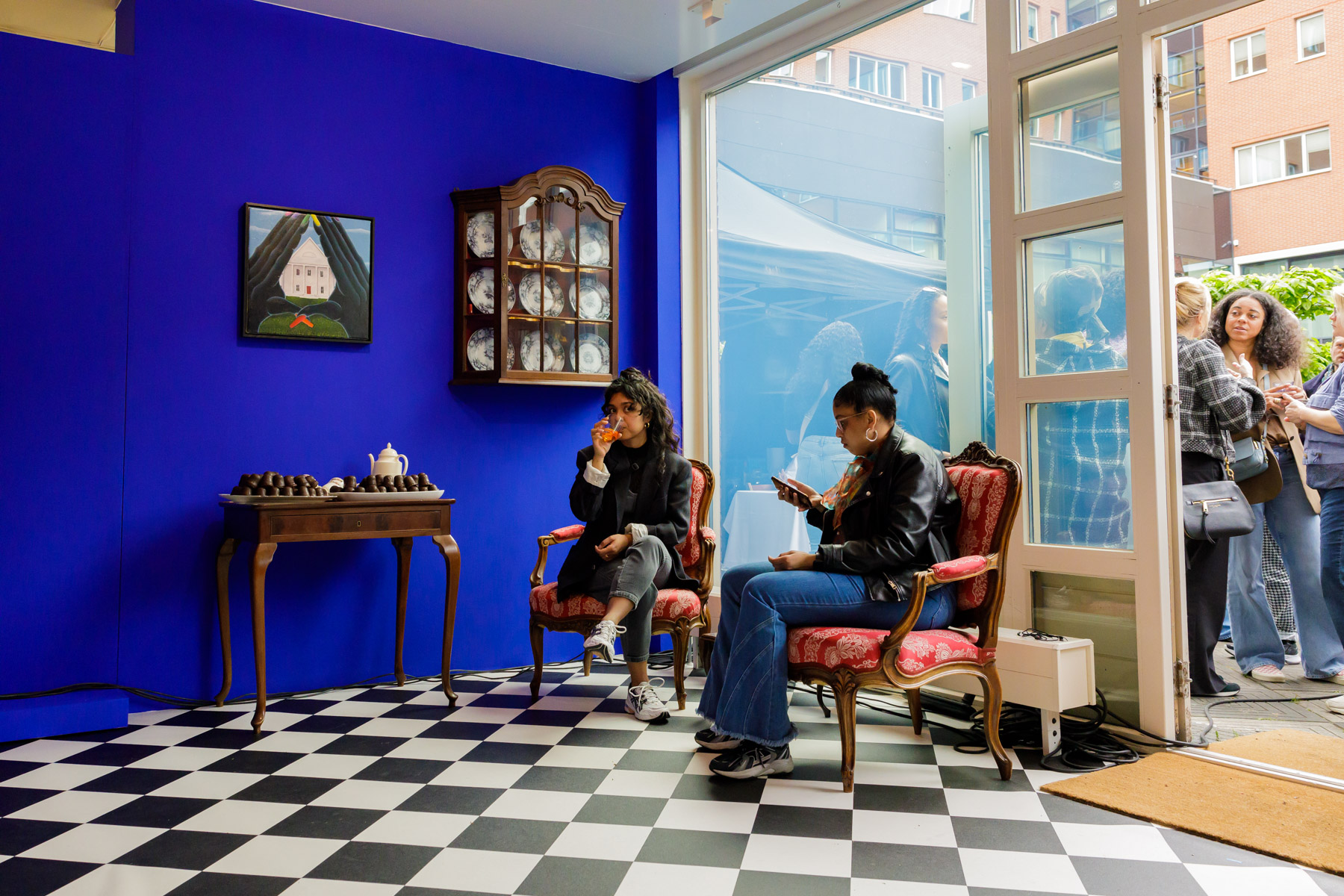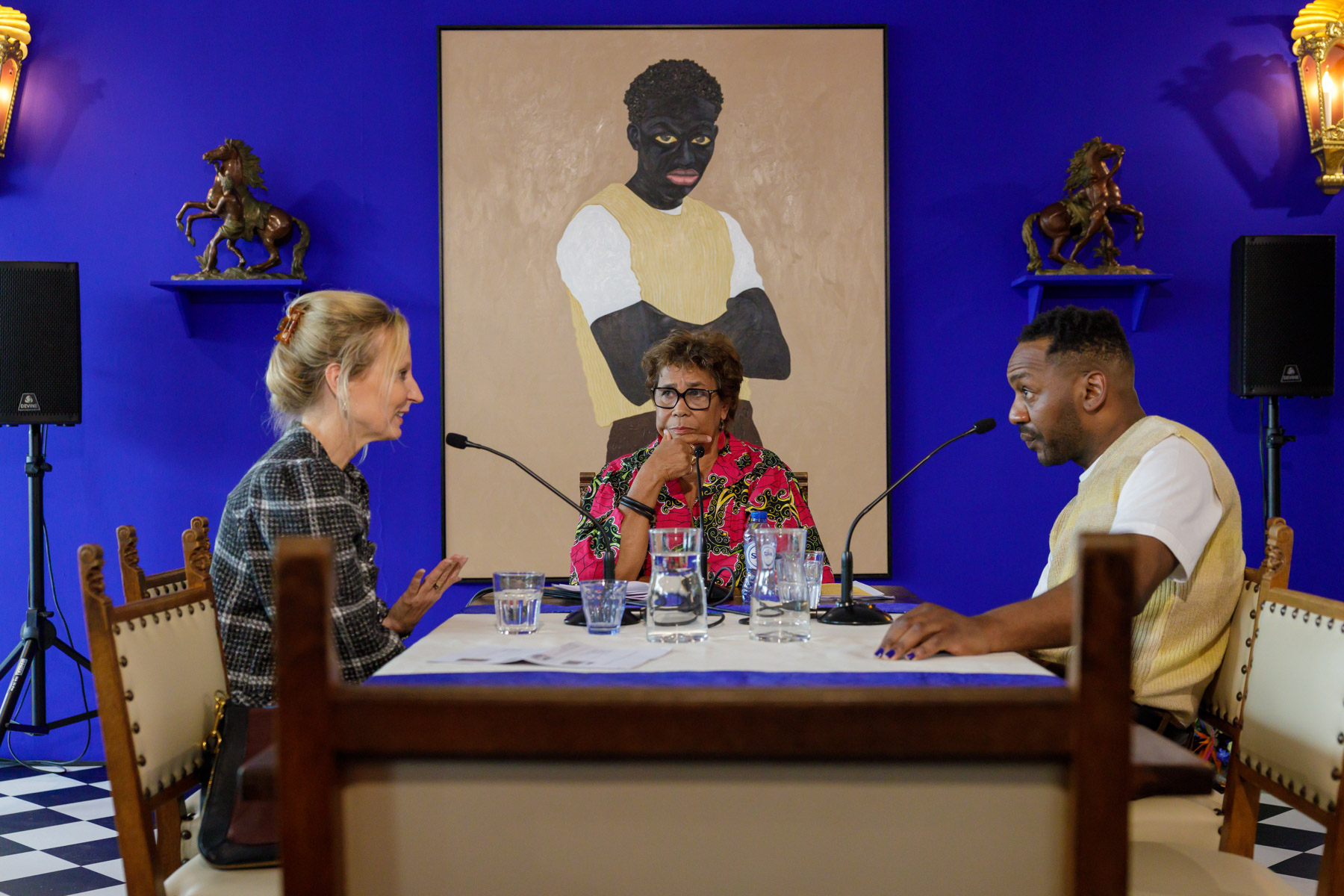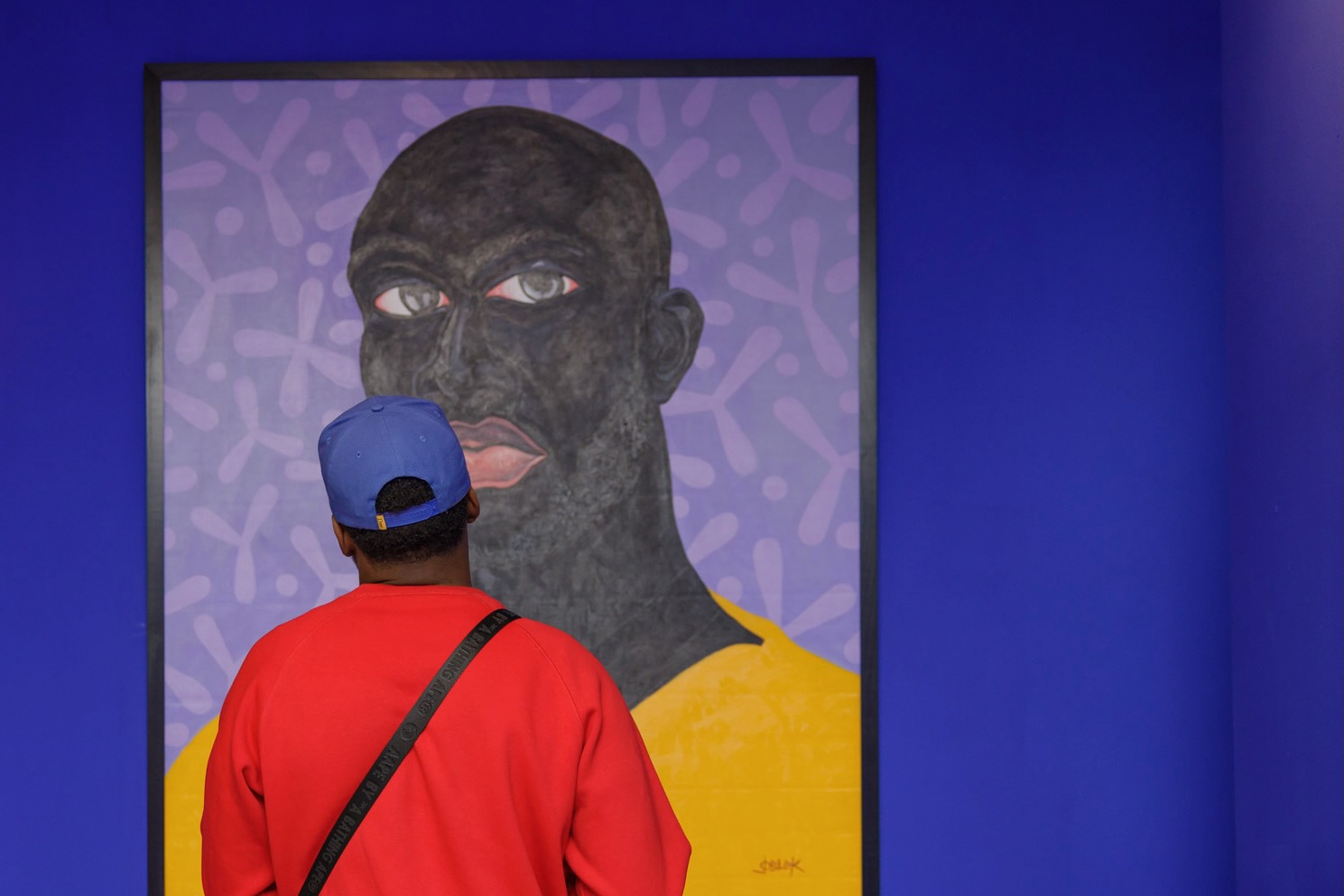Knight in Shining Armour, a new exhibition at CBK Zuidoost in Amsterdam, reappropriates what was once appropriated by suppression and the white gaze. And it’s playful.
The ground looks like a chess board, with its black and white tiles surrounded by blue walls that carry the art that claims back the images and the narratives once stolen by colonialists, enslavers, suppressors and those who continue to perpetuate those images and narratives. Reappropriating the appropriated, Knights in Shining Armour is an exhibition curated by Claudio Ritfeld, welcoming visitors at the CBK in Bijlmer Amsterdam until July 1, 2023.
How do you reappropriate the appropriated? I wonder, how do you take it back? In this exhibition: by teasing, claiming space on the walls and by playing with what was once used to insult. During the panel talk at the exhibition opening, curator Claudio Ritfeld, Barbera Wolfensberger – the Department of Education, Art & Science General Director for Culture and Media – and the host, Noraly Beyer, sat on Dutch colonial furniture lent by the Dutch National Archive of Cultural Heritage. Knights in Shining Armour showcases the works of seven artists from different black communities globally.
Whilst listening to the panel talk, I got the impression that Ritfeld doesn’t want to over-intellectualize the topic but rather create a space that celebrates how black artists depict black people whilst sprinkling some humour in how the exhibition is curated. Noraly Beyer asked the panellists about the pain, implicitly referring to the pain caused by suppression and appropriation, transmitted through the works, the pain Ritfeld experienced. Beyer asked Barbera Wolfensberger if she could also feel the pain behind the works, which she said she could. But Ritfeld didn’t want to dwell on the word pain, rather he wanted this exhibition to be funny. The panel host looked surprised and so was I. A celebratory counter-narrative yes, but funny?

As Ritfeld’s words sank in I remembered laughing myself as I walked through the exhibition. I laughed because it was playfully provocative. There was a pile of small chocolate-covered cream cakes, on a colonial-styled table with a scattered tea set around it. In the Netherlands and Germany, these sweets were at the centre of debate due to their prior racist name, and here at an exhibition celebrating blackness, they were displayed. Reappropriating the appropriated. In the middle of the room were two clay figures, portraying white people in a stereotypical way African people used to be portrayed. One of the sculptures reminded me of the case of Sarah Baartman - but now depicted in white. Reappropriating the appropriated. In the flow of the panel, Ritfeld also mentioned he wants people of colour to see themselves in the paintings on the wall. “I want to be like him, actually I am him,” Ritfeld said. The audience laughed as they were invited to notice that Ritfeld sitting on the colonial chair and the young man portrayed in the majestically big painting behind the panel table, wore the same outfit - brown pants white shirt and beige sweater vest.

And it’s true, rarely have I seen a room full of paintings of these sizes showing black people. As the panel talk ended, the visitors engaged in the joys of appreciating the art, socializing, drinks and food and enjoying Caribbean, African and diaspora tunes on the chessboard dance floor. I asked artist Zella Vanie what their favourite piece in the exhibition was and they mentioned it was the picture by Ade Dare, with the slightly blue-ish painted woman. Zella said it’s because of her eyes, Zella loves eyes that transmit emotion - and those eyes look like they had emptied out all water. Now there are no tears left to shed, and now her eyes are just looking at the viewer. In that conversation I realized, most of the pictures themselves didn’t make me laugh, what made me laugh was the situation in how the pictures were presented, the colonial chairs, the sweets, the sculptures and the deco. But I didn’t want to over-intellectualize it, so I went for a drink and some snacks.

More about the artists and their works here.


